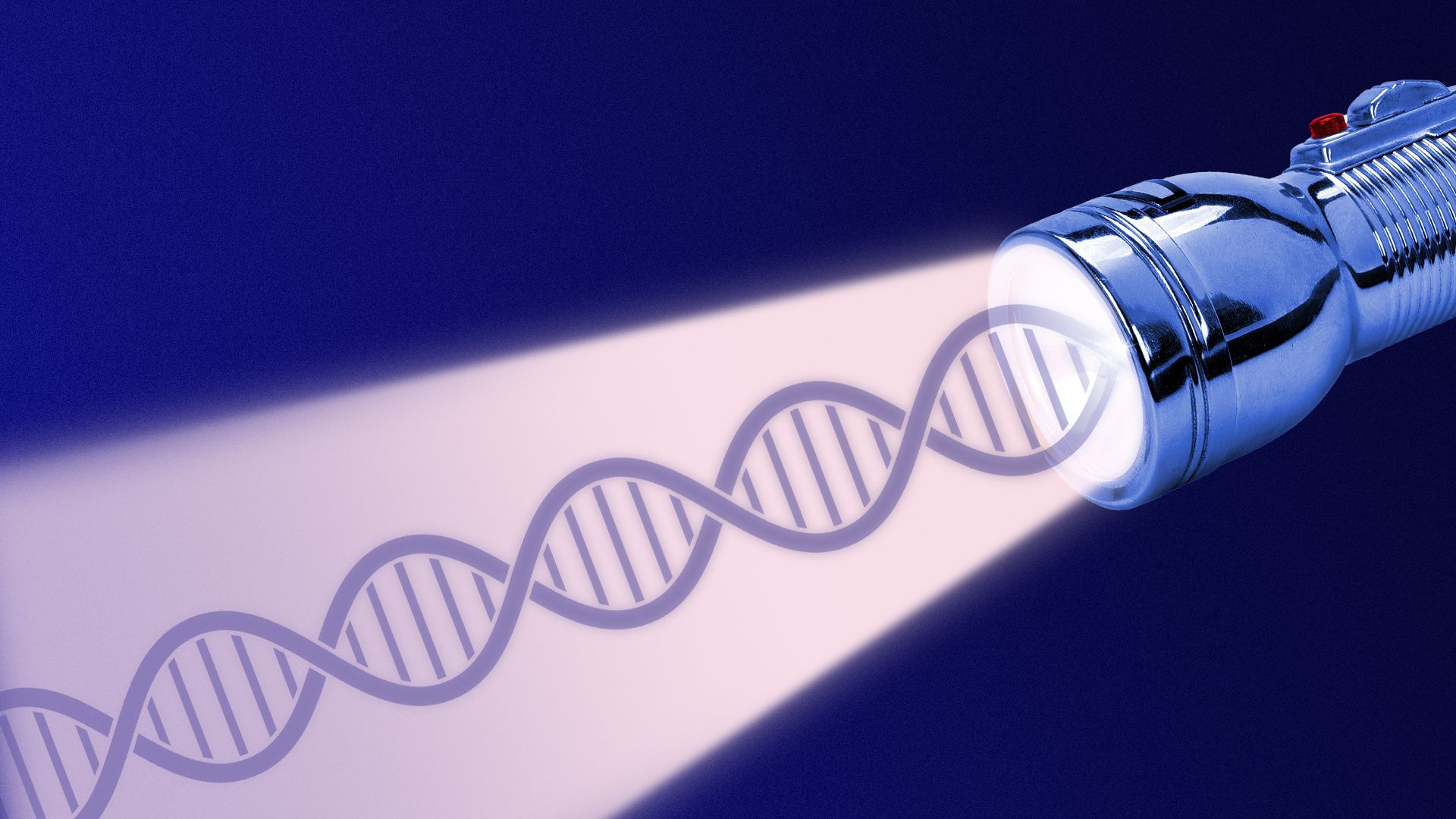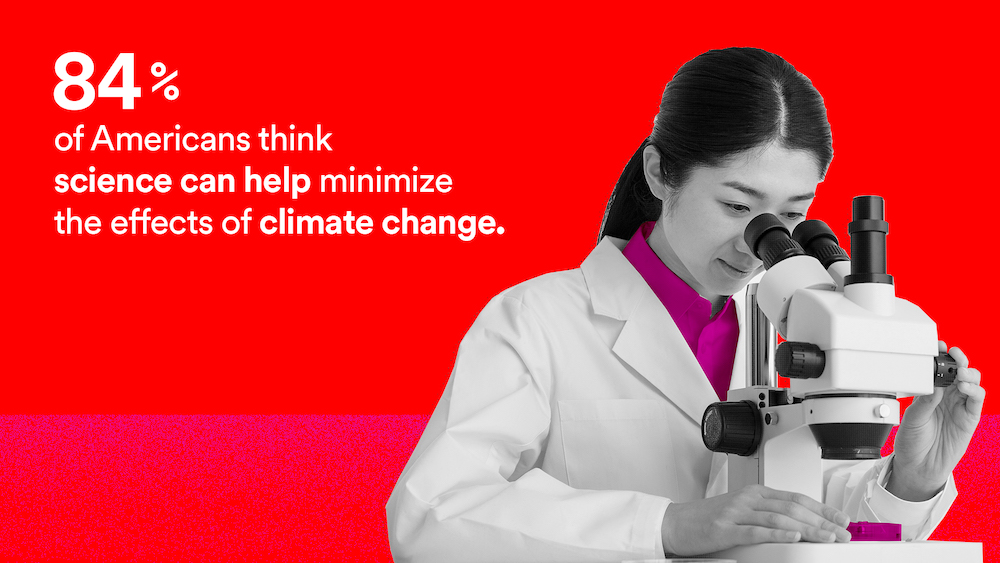| | | | | | | Presented By 3M | | | | Axios Science | | By Alison Snyder · Jun 30, 2022 | | Thanks for reading Axios Science. This week's newsletter is 1,656 words, about a 6-minute read. | | | | | | 1 big thing: Next-gen blood tests |  | | | Illustration: Sarah Grillo/Axios | | | | The ability to interrogate DNA, proteins and other material in the bloodstream for information about cancers, infectious disease and other conditions is rapidly advancing. Why it matters: Next-generation blood tests can help detect some diseases early but it's still unclear how much they can improve treatment and ultimately affect whether someone survives a disease. - Dozens of companies are trying to develop non-invasive tests, or liquid biopsies, that can pick up signals from tumors or evidence of infection.
- The market for liquid biopsies is predicted to reach more than $11 billion by 2030, according to one recent estimate.
How it works: Liquid biopsies sequence DNA, RNA, proteins and other material circulating in the bloodstream free from cells. Some tests analyze chemical modifications to DNA that indicate which genes are turned on or off — an epigenetic fingerprint that can point to what kind of cell the DNA came from and, for example, the origin of a cancer in the body. - Prenatal tests that analyze cell-free DNA to screen for genetic conditions are routinely used despite concerns about false positive results with some tests.
- They're also being used to monitor for early signs that a transplanted organ is being rejected.
- And they're being developed to detect infectious diseases and to personalize cancer treatment.
Infectious diseases: Degraded DNA from microbes and pathogens circulates in the blood of people who have been infected. - A commercially available test developed by Karius screens blood for more than 1,200 bacteria, fungi and viruses. Some studies have found the test can be used to more rapidly diagnose and target treatment for bacteria that cause sepsis, pneumonia and other conditions.
- "A lot of clinical tests are geared toward detecting the usual suspects. But with these modern technologies, you can also identify the unusual pathogens ... that are not frequently suspected," says Iwijn De Vlaminck, a biomedical engineering professor at Cornell University and an adviser to Karius.
- But some studies suggest more data is needed to assess how much next-generation sequencing tests can improve patients' outcomes. There are also current limitations, including that tests can pick up DNA even after a pathogen is dead.
- The intrigue: In the era of COVID risk calculus, the question of whether someone is infected versus infectious is front of mind in daily life. De Vlaminck and his collaborators are trying to analyze RNA in the bloodstream for precise indicators of the damage a pathogen has done to its host's cells — and whether they are infectious.
Cancer: Tumors shed fragments of DNA and protein into the blood that companies, including Haystack and Natera, are using to monitor for small amounts of cancer cells that can remain after treatment and are an early signal of recurrence. - A recent study looked at the effectiveness of using liquid biopsies to decide whether someone should have chemotherapy after surgery to treat stage 2 colon cancer to try to prevent recurrence. Follow-on treatment for the cancer benefits only a small fraction of patients.
- Some patients' blood was analyzed for circulating tumor DNA that is an indicator of remaining cancer cells while another group of patients received the standard clinical assessment. In the group tested with liquid biopsies, 15% of patients then received chemotherapy versus 28% in the group getting standard care.
- After two years of monitoring, the rates of survival without a recurrence of the cancer were roughly the same — about 93% of patients in each group — even though fewer patients were treated with chemotherapy in the group that received liquid biopsies.
Beyond understanding a cancer in someone already known to have it, some companies are focusing on tests to screen people without symptoms for different kinds of cancers. - Grail offers a direct-to-consumer multiple cancer screening test. Exact Sciences and others are also developing tests.
- Liquid biopsies can detect some cancers early — which can be crucial for diseases like pancreatic cancer that typically aren't diagnosed until later stages when it is more difficult to treat.
- But some experts are concerned they can produce false positives that spur unnecessary treatments.
|     | | | | | | 2. The big question about liquid biopsies | | The big question: Do liquid biopsies really change someone's chances of surviving a disease? - The answer — which depends in large part on the cancer and available treatment for it — could come from large clinical trials on the horizon.
- Depending on the results of a four-year pilot study — endorsed earlier this month by National Cancer Institute advisers — a follow-on study of nearly 300,000 people over seven to eight years could assess whether early detection with different liquid biopsies saves lives, Philip Castle, director of the NCI Division of Cancer Prevention recently told ScienceInsider.
What to watch: The field needs better proxies for understanding if a test is ultimately saving lives rather than waiting many years for an answer, says Nickolas Papadopoulos, a professor of oncology and pathology at the Johns Hopkins University School of Medicine, who is an adviser to Exact Sciences and on the board of Haystack. - He acknowledges the risks of overtreating based on early detection but "what is the alternative?" he says, especially for cancers that aren't typically caught until their later stages.
- "We know that this is not working well so we have to change something."
|     | | | | | | 3. Catch up quick on COVID |  Data: CDC; Chart: Erin Davis/Axios Visuals The FDA today said COVID vaccine boosters will need to be updated to protect people from more recent subvariants of the virus that now have a foothold in the U.S. China could soon approve its first mRNA vaccine for COVID, Yvaine Ye writes for Nature. A new study suggests that early in the pandemic, people living in low-income countries were at roughly twice the risk of dying from COVID compared to people in wealthier nations, Giorgia Guglielmi reports also for Nature. |     | | | | | | A message from 3M | | A more sustainable world with science | | |  | | | | The 2022 State of Science Index shows that people want science to solve environmental issues the most. Why it's important: Climate change and its effects are becoming increasingly personal for people around the world. Find out how science can help address climate change. | | | | | | 4. U.S. and China strive for Mars rocks |  | | | Illustration: Annelise Capossela/Axios | | | | Rocks from Mars are a prize for the U.S. and China, Axios' Miriam Kramer writes. Why it matters: Experts stress parallel missions by the two countries to return rock and dirt samples from the Red Planet aren't being driven solely by competition, but the nation that sends back samples first will get international bragging rights and a scientific edge. - Mars is a technically difficult target in the solar system, reserved for only the most advanced space-faring nations.
- Completing a sampling mission would be a scientific boon for the nation that achieves it. Returning Mars rocks to Earth, which has never been done before, could allow scientists to figure out if the planet once supported life and under what conditions it may have thrived.
What's happening: NASA and the European Space Agency are moving ahead with a joint mission to bring Martian samples now being collected by the Perseverance rover back to Earth by 2033. - That mission will make use of two landers expected to launch to Mars in 2028 and an orbiter to launch in 2027, all of which will be used to help collect samples and launch them back to waiting scientists on Earth.
- China recently revealed more details about its own effort to bring samples to Earth two years earlier, in 2031.
- The mission, called Tianwen-3, will build on the technology of the nation's Tianwen-1 spacecraft, which landed on Mars last year, and the Chang'e-5 mission, which delivered a sample from the Moon to Earth.
What they're saying: Samples collected by NASA with Perseverance aren't expected to arrive back on Earth for about a decade. - "That tells me that we're not really serious about giving this a very high priority," John Logsdon, founder of the Space Policy Institute at George Washington University, told Axios.
- "China is doing these things because it thinks there is important stuff to learn, material to obtain, knowledge to expand and — by the way — some bragging rights," says Dean Cheng, a space analyst focusing on China at the Heritage Foundation.
Read the entire story. |     | | | | | | 5. Worthy of your time |  | | | Giant panda eating bamboo. Photo: Sharon Fisher | | | | Pandas evolved their most perplexing feature at least 6 million years ago (Katie Hunt — CNN) How physicists are probing the Higgs boson 10 years after its discovery (Emily Conover — Science News) Zika or dengue infections make you more appealing to mosquitoes (Corryn Wetzel — New Scientist) CRISPR, 10 years on (Carl Zimmer — NYT) |     | | | | | | 6. Something wondrous |  | | | The dust environment of the Large Magellanic Cloud/Image: ESA, NASA, NASA-JPL, Caltech, Christopher Clark (STScI), S. Kim (Sejong University), T. Wong (UIUC) | | | | New images reveal the dust between stars that shape galaxies not too far from our Milky Way, Miriam writes. Why it matters: Dust expelled by dying stars can be used to build new ones, so scientists want to understand it to figure out more about how stars form, evolve and eventually die. What's happening: The new photos — which show dust within the Andromeda galaxy, Large and Small Magellanic Clouds and the Triangulum galaxy — were created by combining data from four retired telescopes. - The Herschel Space Observatory, which went offline in 2013, provided images of interstellar dust, showing off the details of dust clouds and "revealing intricate substructures," within them according to a NASA news release on the new work.
- However, Herschel wasn't designed to detect the light of dust clouds that were spread out and missed up to 30% of the light emitted by dust in these areas, NASA added.
- Because of that, researchers also combined data from three other retired telescopes: the Planck observatory, the Infrared Astronomical Satellite (IRAS) and Cosmic Background Explorer (COBE).
Details: Red represents hydrogen gas in the images. The photo of the Large Magellanic Cloud (above) has tails of hydrogen coming off of it to the bottom left. - Scientists think hydrogen was disturbed when the galaxy — a satellite galaxy of the Milky Way — collided with the Small Magellanic Cloud 100 million years ago.
- "Bubbles of empty space indicate regions where stars have recently formed, because intense winds from the newborn stars blow away the surrounding dust and gas," NASA said.
- "The green light around the edges of those bubbles indicates the presence of cold dust that has piled up as a result of those winds. Warmer dust, shown in blue, indicates where stars are forming or other processes have heated the dust."
Go deeper: Check out more of the photos through NASA |     | | | | | | A message from 3M | | Climate change gets personal | | |  | | | | Environmental concerns have intensified over the past year. - 69% of Americans surveyed in the 3M 2022 State of Science Index are concerned that they or a loved one may be displaced from where they live due to extreme weather.
Find out how science can help minimize the effects of climate change. | | | | Many thanks to Miriam for contributing to this week's newsletter and to Laurin-Whitney Gottbrath and Carolyn DiPaolo for editing it. |  | It's called Smart Brevity®. Over 300 orgs use it — in a tool called Axios HQ — to drive productivity with clearer workplace communications. | | | | | | Axios thanks our partners for supporting our newsletters. If you're interested in advertising, learn more here.
Sponsorship has no influence on editorial content. Axios, 3100 Clarendon Blvd, Suite 1300, Arlington VA 22201 | | | You received this email because you signed up for newsletters from Axios.
Change your preferences or unsubscribe here. | | | Was this email forwarded to you?
Sign up now to get Axios in your inbox. | | | | Follow Axios on social media:    | | | | | |
No comments